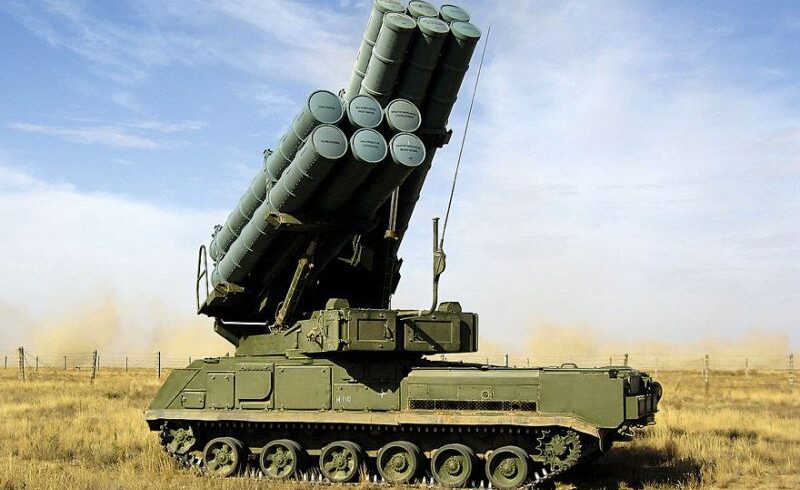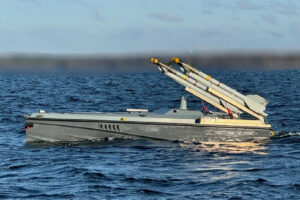
Hi, this is Asami Terajima reporting from Kyiv on day 1,344 of Russia’s full-scale invasion of Ukraine.
Today’s top story so far:
Ukraine’s Special Operations Forces (SSO) said on Oct. 31 that it had destroyed a Russian Buk-M3 air defense system and a Nebo-U radar in Russia’s Rostov Oblast, which borders Ukraine to the east.
The Buk-M3 air defense system destroyed in the claimed September attack can hit targets up to 80 kilometers, Special Forces said in its Telegram post. It added that a Nebo-U radar can detect fighter jets in a range of up to 400 kilometers.
The SSO claim comes as Ukraine continues to hit military targets and oil refineries deep inside Russia using domestically produced long-range drones, trying to slowly grind down Russia’s war machine.
“Both systems posed a major threat to the operations of Ukraine’s combat aviation in the frontline zone and hindered Ukrainian deep strike attacks,” the SSO said, adding that each complex costs “hundreds of millions of dollars.”
Last updated 12:36 p.m. Kyiv time.
Extrajudicial killings within the Russian military are becoming more widespread, according to an investigation published by the Russian independent outlet Verstka.
The practice of “nullifying” (Russian: “obnulenie”) — the Russian military’s term for executing its soldiers — increasingly involves sending personnel on deadly assualt missions without proper protection, journalists found.
Verstka collected information on over 100 “nullifiers” among Russia’s senior officers. Investigators spoke to military personnel and their families, and also studied complaints from the military prosecutor’s office.
One example is Colonel Igor Istrati, a commander of Russia’s 114th Separate Motorized Rifle Brigade, who allegedly ordered executions and torture of soldiers in his unit. He reportedly sent troops on assualts without weapons or equipment in an effort to “nullify” targeted soldiers.
“You know, what’s happening there is that… You never know where the bullet will come from: from your own side or from the Ukrainians,” said Dmitry, a member of the brigade.
‘You never know where the bullet will come from’ — Russian troops carry out torture, executions in own ranks, media investigation finds
“You know, what’s happening there is that… You never know where the bullet will come from: from your own side or from the Ukrainians,” Dmitry, a Russian soldier, told the independent outlet Verstka.
New missile that pushed Trump to leave nuclear treaty fired by Russia at Ukraine, Reuters reports
Last updated 11:41 a.m. Kyiv time.
A Russian missile whose development pushed U.S. President Donald Trump to withdraw from the Intermediate-Range Nuclear Forces (INF) Treaty back in 2019 has been fired at Ukraine on numerous occasions, Reuters reported on Oct. 31, citing Ukrainian officials.
Russia’s 9M729 ground-launched cruise missile, sometimes referred to as the Iskander K to distinguish it from Iskander M ballistic missiles, was recorded flying as far as 1,200 kilometers, according to unnamed Ukrainian officials cited by Reuters.
Signed by then U.S. President Ronald Reagan and Soviet leader Mikhail Gorbachev in 1987 towards the end of the Cold War, the INF Treaty banned all ground-launched missiles with ranges between 500 and 5,500 kilometers, in an effort to reduce the density of potentially nuclear-armed weapons deployed by Russia and NATO in Europe.
Russia initially claimed that that the missile, like the Iskander M, has a range within to treaty’s limits, but reports by U.S. officials and analysts in 2017, claimed that the real range was as high as 2,500 kilometers.
The reports of Russia deploying the 9M729 at a longer range vindicate Trump’s decision to withdraw from the treaty, which Moscow only left in August 2025.
New missile that pushed Trump to leave nuclear treaty fired by Russia at Ukraine, Reuters reports
According to the officials who spoke to Reuters, Russia attacked Ukraine with the missile 23 over August 2025 alone, as well as on several occasions in 2022.
Last updated 2:48 a.m. Kyiv time.
Energy facilities in Russia’s Oryol, Vladimir, and Yaroslavl oblasts were attacked overnight on Oct. 31, according to Russian officials and Telegram channels.
The attacks reportedly targeted the Oryol thermal power plant (TPP), the region’s largest generating source of electricity and heat; the Vladimir electrical substation, a critical Russian energy hub; and the Novo-Yaroslavsky oil refinery, the largest refinery in northernRussia.
Residents of the city of Oryol reported explosions during the night, the Russian opposition news channel Astra reported. Surveillance footage captured the attack on the plant, showing a large blast.
Oryol Oblast Governor Andrey Klychkov claimed that the Oryol TPP was struck by debris from intercepted drones, “causing damage to power supply equipment.” He also said that no fires or casualties were reported and that emergency services were at work at the scene.
Repairs are ongoing and power has been “almost completely restored,” Klychkov claimed.
Ukraine strikes major Russian energy infrastructure in multiple regions, officials, media report
Drones have reportedly targeted a power plant in Oryol Oblast, an electrical substation in Vladimir Oblast, and an oil refinery in Yaroslavl Oblast.
At least 14 killed, 71 injured in Russian attacks on Ukraine over past day
At least 14 people were killed, and 71 people were injured in Russian attacks against Ukraine over the past day, local authorities reported on Oct. 31.
The Air Force reported on Oct. 31 that Russia had launched 146 Shahed, Gerbera and other types of drones against Ukraine overnight, of which about 90 were Shahed. It said it downed 107 of them, in addition to a ballistic missile.
In eastern Donetsk Oblast, Russian attacks killed eight people and wounded 18 over the past day, regional governor Vadym Filashkin said on Oct. 31.
In northeastern Kharkiv Oblast, regional governor Oleh Syniehubov said on Oct. 31 that Russian attacks wounded two, including a 78-year-old man and a 56-year-old woman, over the past day.
In southeastern Zaporizhzhia Oblast, regional governor Ivan Fedorov said on Oct. 31 that 3 people were killed, and 29 were wounded in Zaporizhzhia and the city’s surrounding region over the past day. He reported that Russian forces had struck Zaporizhzhia with nine missiles in this timeframe.
In southern Kherson Oblast, regional governor Oleksandr Prokudin said in the morning on Oct. 31 that a person was killed and seven were wounded, including one child.
In northeastern Sumy Oblast, the regional military administration said on Oct. 31 that 15 people were wounded, including four children.
On top of the casualties, the Ukrainian railway reported on Oct. 31 that its infrastructure had suffered from Russian attacks in Sumy and Kharkiv oblasts in the northeast overnight.
‘Vile attack’ — Emergency power outages across Ukraine as Russia targets thermal power plants in mass missile, drone strike
Air raid alerts were issued across the entire county overnight, with Ukraine’s Air Force tracking Shahed-type drones, cruise and ballistic missiles, as well as hypersonic Kinzhal missiles.
General Staff: Russia has lost 1,141,830 troops in Ukraine since Feb. 24, 2022
ussia has lost around 1,141,830 troops in Ukraine since the beginning of its full-scale invasion on Feb. 24, 2022, the General Staff of Ukraine’s Armed Forces reported on Oct. 31.
The number includes 970 casualties that Russian forces suffered over the past day.
According to the report, Russia has also lost 11,310 tanks, 23,519 armored fighting vehicles, 66,111 vehicles and fuel tanks, 34,128 artillery systems, 1,533 multiple launch rocket systems, 1,233 air defense systems, 428 airplanes, 346 helicopters, 76,355 drones, 28 ships and boats, and one submarine.





